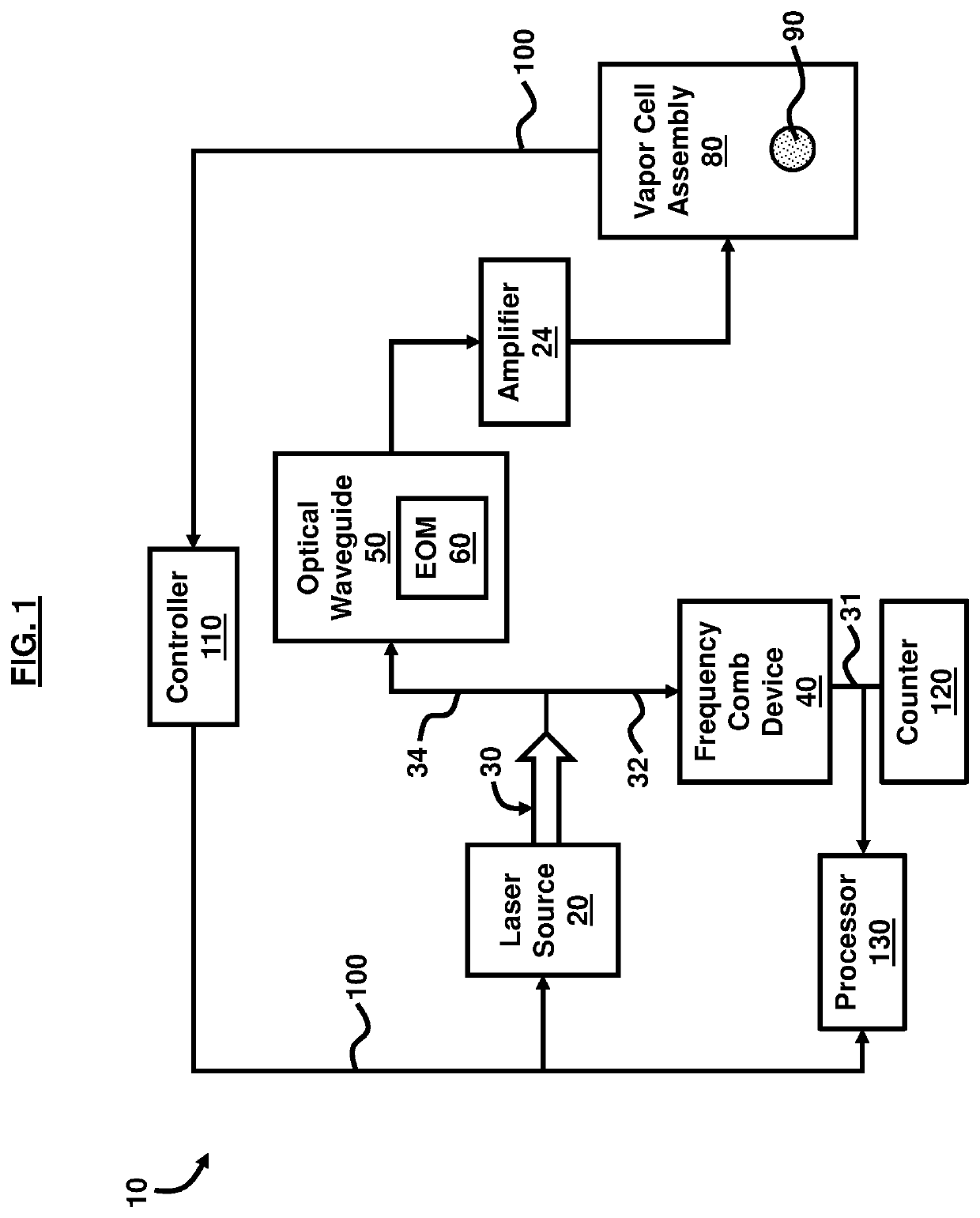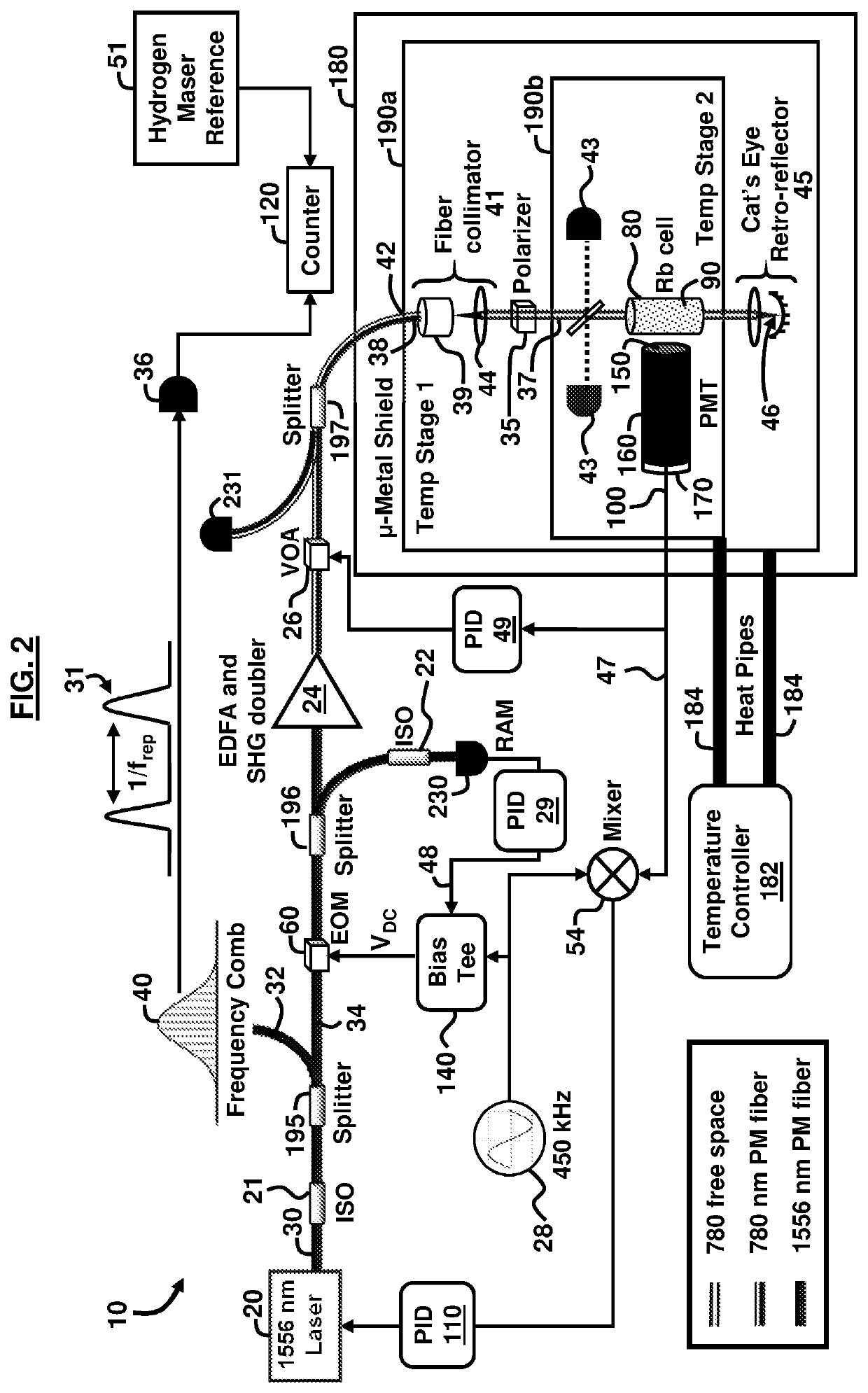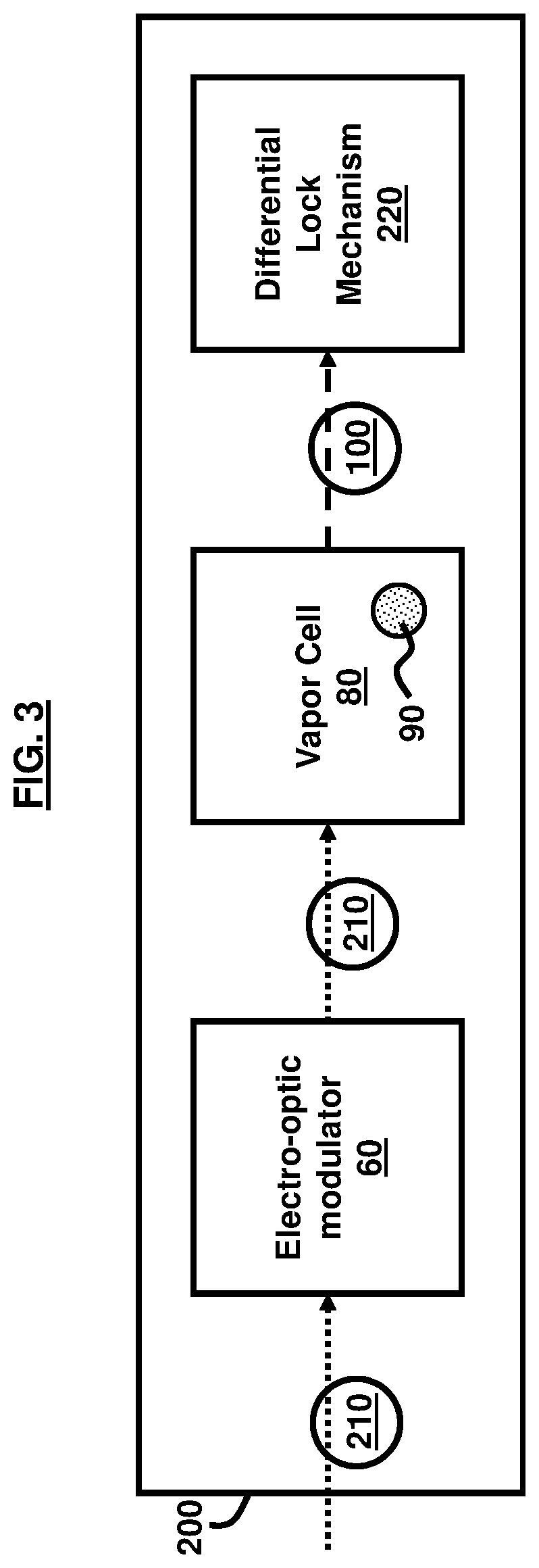Optical rubidium atomic frequency standard
a rubidium atomic frequency and optical technology, applied in the field of atomic clocks, can solve the problems of complex laser sources and optical systems required for laser cooling and interrogation of atomic samples, and the improvement of the definition of portable and deployable clocks has not yet been made an impact, so as to increase the interaction of rubidium atoms and suppress the residual amplitude modulation of light beams
- Summary
- Abstract
- Description
- Claims
- Application Information
AI Technical Summary
Benefits of technology
Problems solved by technology
Method used
Image
Examples
Embodiment Construction
[0031]Embodiments of the disclosed invention, its various features and the advantageous details thereof, are explained more fully with reference to the non-limiting embodiments that are illustrated in the accompanying drawings and detailed in the following description. Descriptions of well-known components and processing techniques are omitted to not unnecessarily obscure what is being disclosed. Examples may be provided and when so provided are intended merely to facilitate an understanding of the ways in which the invention may be practiced and to further enable those of skill in the art to practice its various embodiments. Accordingly, examples should not be construed as limiting the scope of what is disclosed and otherwise claimed.
[0032]In the drawings, the size and relative sizes of layers and regions may be exaggerated for clarity. The embodiments herein provide a testing technique to determine the stability of the frequency of a signal for an atomic optical clock. The embodim...
PUM
| Property | Measurement | Unit |
|---|---|---|
| optical wavelength | aaaaa | aaaaa |
| wavelength | aaaaa | aaaaa |
| wavelength | aaaaa | aaaaa |
Abstract
Description
Claims
Application Information
 Login to View More
Login to View More - R&D
- Intellectual Property
- Life Sciences
- Materials
- Tech Scout
- Unparalleled Data Quality
- Higher Quality Content
- 60% Fewer Hallucinations
Browse by: Latest US Patents, China's latest patents, Technical Efficacy Thesaurus, Application Domain, Technology Topic, Popular Technical Reports.
© 2025 PatSnap. All rights reserved.Legal|Privacy policy|Modern Slavery Act Transparency Statement|Sitemap|About US| Contact US: help@patsnap.com



